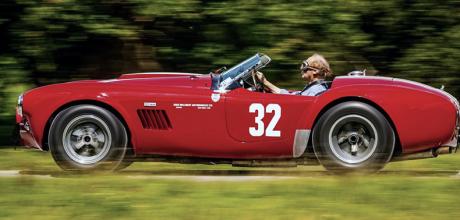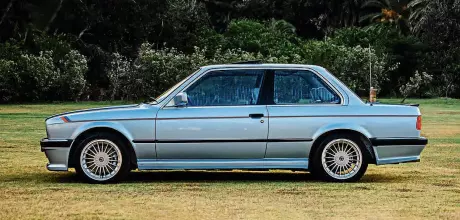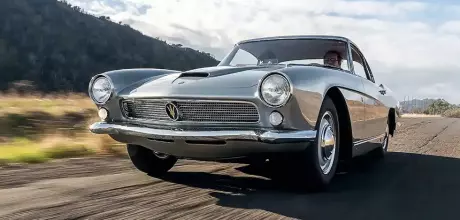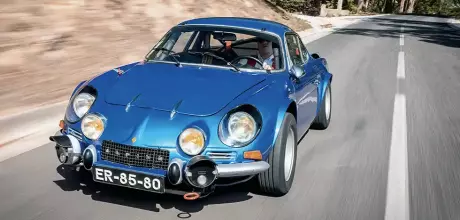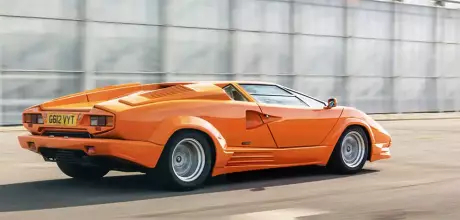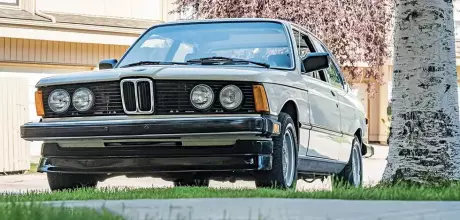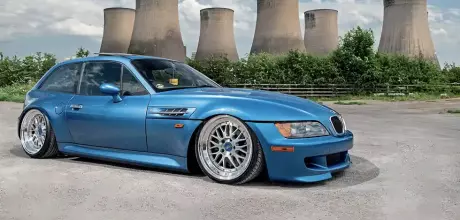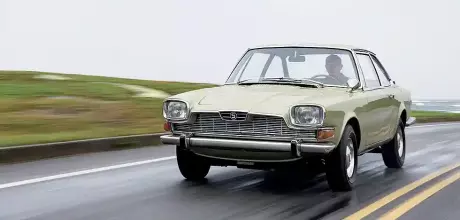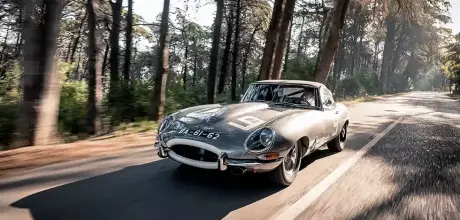Sport Cars
Editor's comment
F1, round two
McLaren may have been swathed in some negative headlines and unwelcome speculation for quite a few years now, but it’s easy to forget that there was a time not so long ago when the company was not only unimpeachable but untouchable.
Its utter dominance of Formula 1 may have drawn to a close in 1990, but there were still spurts of brilliance, seemingly coming towards the end of each decade. And even when it wasn’t winning, McLaren was still always a contender, still a very big fish in the paddock. Then, after the turn of the millennium, design – especially British design – suddenly became a big deal, as the world’s purchasing ethos shifted from people only wanting everything as cheaply as possible to swathes of people being prepared to pay a premium for excellence built on flawless or innovative engineering. Especially if it was blue-blood British. Just ask James Dyson.
The time was ripe for McLaren to launch itself into road cars, the company image, the sterile headquarters in Woking (from which my rotten old nail was once evicted on aesthetic grounds, but that’s another story) all suggesting a laboratory from which only purity and genius could emerge.
Of course, there had been McLaren road cars before, but this was a whole different ballgame to the one-off M6GT that Bruce McLaren himself drove around Woking, or the F1, which will forever remain as much a high-volume science experiment as a low-volume car.
The acute singularity of purpose of McLaren’s previous road cars meant that, really, the MP4-12C was its first real ground-up production car, a high-performance supercar with its own singular purpose: to give a bloody nose to Ferrari. And it did. As you always knew it would, with Ron Dennis at the helm.
Not only that, though, the MP4-12C (or 12C as virtually everyone would have it) was the strategic foundation for everything that has come since, McLaren seamlessly melding its rich heritage with cutting-edge technology… and so much pace. Whatever McLaren’s current woes, the 12C was a high watermark for a remarkable company at the height of its powers. I’m not saying everything has gone downhill since, but even today the 12C is still the one I’d want, not just for what it can do, but also the enormity of what it represents.
McLaren may have been swathed in some negative headlines and unwelcome speculation for quite a few years now, but it’s easy to forget that there was a time not so long ago when the company was not only unimpeachable but untouchable.
Its utter dominance of Formula 1 may have drawn to a close in 1990, but there were still spurts of brilliance, seemingly coming towards the end of each decade. And even when it wasn’t winning, McLaren was still always a contender, still a very big fish in the paddock. Then, after the turn of the millennium, design – especially British design – suddenly became a big deal, as the world’s purchasing ethos shifted from people only wanting everything as cheaply as possible to swathes of people being prepared to pay a premium for excellence built on flawless or innovative engineering. Especially if it was blue-blood British. Just ask James Dyson.
The time was ripe for McLaren to launch itself into road cars, the company image, the sterile headquarters in Woking (from which my rotten old nail was once evicted on aesthetic grounds, but that’s another story) all suggesting a laboratory from which only purity and genius could emerge.
Of course, there had been McLaren road cars before, but this was a whole different ballgame to the one-off M6GT that Bruce McLaren himself drove around Woking, or the F1, which will forever remain as much a high-volume science experiment as a low-volume car.
The acute singularity of purpose of McLaren’s previous road cars meant that, really, the MP4-12C was its first real ground-up production car, a high-performance supercar with its own singular purpose: to give a bloody nose to Ferrari. And it did. As you always knew it would, with Ron Dennis at the helm.
Not only that, though, the MP4-12C (or 12C as virtually everyone would have it) was the strategic foundation for everything that has come since, McLaren seamlessly melding its rich heritage with cutting-edge technology… and so much pace. Whatever McLaren’s current woes, the 12C was a high watermark for a remarkable company at the height of its powers. I’m not saying everything has gone downhill since, but even today the 12C is still the one I’d want, not just for what it can do, but also the enormity of what it represents.
Editor's comment
JOSH SWEENEY
‘The BMW-Glas V8 has a distinctive appeal with a sporty yet classic vibe. Attention to detail in both exterior and interior design elements is what sets apart iconic vehicles and contributes to their timeless fascination.’
‘The BMW-Glas V8 has a distinctive appeal with a sporty yet classic vibe. Attention to detail in both exterior and interior design elements is what sets apart iconic vehicles and contributes to their timeless fascination.’
Editor's comment
The lengths we’ll go to
More often than we would probably like to admit, amazing stories fall into Octane’s lap and a tentative email with a picture attachment sets in motion a chain of events that ends with you reading about a very special car. Every one of those easy wins, however, is counterbalanced by something that takes a lot more time, effort and, inevitably, money to put together. And in 28 years in this game I cannot remember a more fraught process than our collective quest to get a Schuppan 962 CR into Octane. The reason for wanting to is obvious – great car, great story, plus the compulsion finally, and for the first time, properly to tell the world how this remarkable Le Mans car for the road measures up to its billing.
The reasons we had to go the extra mile were myriad, but with a pool of fewer than ten cars to choose from it was never going to be easy. The first car we lined up was actually the one we ended up featuring, but when under a previous ownership. Photographing it and writing about it were fine, but driving it, we were told, was a strict no-no. Now, I don’t want to come across as all prissy here but, though we were extremely grateful for the offer, we reckoned we were probably only going to feature a Schuppan once and not to drive the thing on a public road would leave the biggest – to my mind, the essential – question, unanswered. It would be to deny the car’s raison d’etre.
Next up was the final car, tracked down in the USA. An excellent example as it turns out, but such was our fanaticism by then that the fact it was built as a prototype and later converted was enough for us to discount it. With hindsight, we were being overly pedantic. Then came the freshly restored winner of the 2023 London Concours. We chased, followed, harangued, a date was set to drive it between its concours victory and its shipping to the US – then it rained on the day and it wasn’t allowed out to play. After that the trail went cold. I had just about given up when Simon Kidston, not noted for letting any car stand idle regardless of its rarity, value or mileage, wondered aloud to racer-writer Dickie Meaden whether Octane would be interested in giving that very first car we set out to drive a proper seeing-to (on track as well as dream roads) in Wales. Unsurprisingly, we were. So what you see in Octane this month may look like other stories on the surface, but it is actually the product of more than five years of work and at least three times the investment of a normal article (shhh, don’t tell the bosses). Because you are worth it.
More often than we would probably like to admit, amazing stories fall into Octane’s lap and a tentative email with a picture attachment sets in motion a chain of events that ends with you reading about a very special car. Every one of those easy wins, however, is counterbalanced by something that takes a lot more time, effort and, inevitably, money to put together. And in 28 years in this game I cannot remember a more fraught process than our collective quest to get a Schuppan 962 CR into Octane. The reason for wanting to is obvious – great car, great story, plus the compulsion finally, and for the first time, properly to tell the world how this remarkable Le Mans car for the road measures up to its billing.
The reasons we had to go the extra mile were myriad, but with a pool of fewer than ten cars to choose from it was never going to be easy. The first car we lined up was actually the one we ended up featuring, but when under a previous ownership. Photographing it and writing about it were fine, but driving it, we were told, was a strict no-no. Now, I don’t want to come across as all prissy here but, though we were extremely grateful for the offer, we reckoned we were probably only going to feature a Schuppan once and not to drive the thing on a public road would leave the biggest – to my mind, the essential – question, unanswered. It would be to deny the car’s raison d’etre.
Next up was the final car, tracked down in the USA. An excellent example as it turns out, but such was our fanaticism by then that the fact it was built as a prototype and later converted was enough for us to discount it. With hindsight, we were being overly pedantic. Then came the freshly restored winner of the 2023 London Concours. We chased, followed, harangued, a date was set to drive it between its concours victory and its shipping to the US – then it rained on the day and it wasn’t allowed out to play. After that the trail went cold. I had just about given up when Simon Kidston, not noted for letting any car stand idle regardless of its rarity, value or mileage, wondered aloud to racer-writer Dickie Meaden whether Octane would be interested in giving that very first car we set out to drive a proper seeing-to (on track as well as dream roads) in Wales. Unsurprisingly, we were. So what you see in Octane this month may look like other stories on the surface, but it is actually the product of more than five years of work and at least three times the investment of a normal article (shhh, don’t tell the bosses). Because you are worth it.



